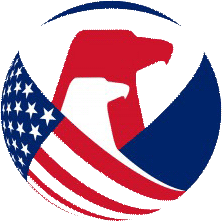Section 104(b)(1) of the Consumer Product Safety Improvement Act of 2008 requires the CPSC to promulgate rulemaking for durable infant or toddler products. Implementing that Congressional instruction, CPSC published in the Federal Register (82 FR 8671) a final rule codifies the regulation for sling carriers at 16 C.F.R. part 1228 and incorporates by reference ASTM F2907, with any modifications by CPSC. 16 C.F.R. § 1228.2 identifies the latest Commission-accepted version of ASTM F2907 that is mandatory as well as any modifications. See the “Previous Versions of the Standard” section below for effective dates.
A sling carrier is a product of fabric or sewn fabric construction, which is designed to contain up to two occupant children with a child being defined as between full-term birth and 35 lbs. (15.9 kg), though manufacturers may provide a higher weight limit, in an upright or reclined position while being supported by the caregiver’s torso.
The designs of infant slings vary, but the designs generally range from unstructured hammock-shaped products that suspend from the caregiver's body to long lengths of material or fabric that are wrapped around the caregiver's body. Infant slings normally are worn with the infant(s) positioned on the front, hip, or back of the consumer, and with the infant(s) facing toward or away from the consumer.
As stated in the “sling carrier” definition, these products generally allow the infant(s) to be placed in an upright or reclined position. However, the reclined position is intended to be used only when the infant(s) are worn on the front of the consumer.
The ability to carry the infant(s) in a reclined position is the primary feature that distinguishes sling carriers from soft infant and toddler carriers.
The requirements for frame child carriers are as follows:
- General requirements
- Laundering
- Hazardous sharp points and edges – see also 16 C.F.R. §§ 1500.3(b)(4)(i)(D) and 1500.3(b)(15)(i)(A)
- Small parts – see also our small parts business guidance page
- Lead in paint – see also our lead in paint business guidance page
- Wood parts
- Locking and latching
- Labeling
- Warning labels attached to the fabric with seams to remain in contact with the fabric around the entire perimeter of the label, see 16 CFR § 1228.2(b)(1)(ii)
- Opening
- Scissoring, shearing, and pinching
- Monofilament threads
- Flammability
- Performance requirements
- Structural integrity
- Restraint system
- Occupant retention
Read-only copies of ASTM standards that are incorporated by reference can be viewed at ASTM’s electronic Reading Room.
Labeling
Per 16 C.F.R. § 1130.4, the following information must be permanently affixed to durable infant or toddler products in English:
- Name of manufacturer or importer
- Contact information (must include US address and phone number, toll-free if available)
- Model name/number
- Product identification number may be used as an identifying feature instead
- Date of manufacture
- Date must be at least month and year, and it can be stated in code form
This labeling requirement is in addition to the tracking label requirement for children’s products. This page summarizes the labeling requirements for durable infant or toddler products.
Registration Form
Product registration forms are required for all durable infant and toddler products to enable the manufacturer or retailer of the product to contact consumers with recall or other safety information. For more information, visit our registration forms business guidance page.
Previous Version of the Standard
15 U.S.C. § 2056a(b)(4)(B) requires the CPSC to evaluate any updates to an incorporated ASTM standard for durable infant or toddler products to determine whether the revised standard improves the safety of the product. Firms must ensure that the product is tested to the Commission-accepted version of ASTM F2907 depending on its date of manufacture:
| Manufactured after... | Must meet... |
|---|---|
| November 19, 2022 | ASTM F2907-22 with modifications, see 87 FR 50929 |
| July 6, 2020 | ASTM F2907-19 with modifications, see 85 FR 21766 |
| January 20, 2018 | ASTM F2907-15 with modifications, see 82 FR 8671 |
Certification
Section 14(a) of the Consumer Product Safety Act (CPSA) requires manufacturers and importers of children’s products subject to a regulation, standard, or ban enforced by the CPSC to certify that those products meet the requirements of the standard by issuing a Children’s Product Certificate (CPC). For sling carriers, the citation to use in section 2 of the CPC is “16 CFR part 1228 — Sling carriers”.
For more information on certification, visit our CPC business guidance page.
Additional Information
- Sling carriers FAQs
- Durable infant or toddler product business guidance page
- Registration forms business guidance page
Contact
For more information, please contact the Small Business Ombudsman (SBO) team:

